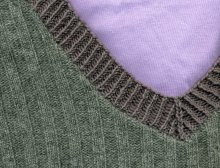It seems I'm not quite done with Wendell Berry. My last post about him kept growing, and I finally just stopped, rather abruptly. Previously, I shared my new insight into why Berry sometimes seems a little smug, a little superior to the rest of us poor mortals. He reveals in The Hidden Wound that he was raised a gentleman farmer, a member of a class that subscribes to the "...notion that one is too good to do what it is necessary for somebody to do...." Berry follows this revelation with this observation:
that he was raised a gentleman farmer, a member of a class that subscribes to the "...notion that one is too good to do what it is necessary for somebody to do...." Berry follows this revelation with this observation:
The unwillingness, or the inability, to dirty one's hands in one's own service is a serious flaw of character. But in a society that sense of superiority can cut off a whole class or a whole race from its most necessary experience.
I'm sure Mr. Berry will be pleased and relieved to know that this farm girl forgives him his upbringing because he understands it. I continue writing because I think now I can put into words why his 1987 essay,
Why I Am Not Going to Buy a Computer generated a collection of angry readers' letters, and continues to be quoted and passed around the Internet 18 years later. In this much-cited essay, Berry explains that many people have urged him to get a computer, and he gives several reasons why he has no plans to do so. He mentions his disapproval of power companies and computer manufacturers, then asks:
What would a computer cost me? More money, for one thing, than I can afford, and more than I wish to pay to people whom I do not admire. But the cost would not be just monetary. It is well understood that technological innovation always requires the discarding of the "old model," the "old model" in this case being not just our old Royal standard, but my wife, my critic, closest reader, my fellow worker. Thus (and I think this is typical of present-day technological innovation) what would be superseded would be not only something, but somebody. In order to be technologically up-to-date as a writer, I would have to sacrifice an association that I am dependent upon and that I treasure.

 When his short essay was reprinted in the venerable Harper's Magazine, the editors forwarded 20 readers' letters, some of which Berry included, along with his own rebuttal in What Are People For?
When his short essay was reprinted in the venerable Harper's Magazine, the editors forwarded 20 readers' letters, some of which Berry included, along with his own rebuttal in What Are People For? . Berry expresses surprise at the strident tone some of his critics have taken.
. Berry expresses surprise at the strident tone some of his critics have taken.
Now, let us remember what computers were like in 1987, when Mr. Berry documented his distaste. There were Unix-running mainframes, toy-like Apples with those cutesie GUIs that crashed all the time, and IBM Personal Computers. I was in graduate school throughout the 1980's and used computers for data management, analysis, statistics, and word processing. At that time, the text-editing experience was much like writing hypertext by hand, and it wasn't the desktop computer's most useful trick. However, IBM was really pushing the PC's at universities. There was plenty of sales pressure, and the more professors that ordered PC's the better the deals IBM offered. Professors who wanted computers were like Mary Kay sales ladies trying to win vacations. (All this was before feisty little Microsoft broke IBM's stranglehold on the computer market.) No wonder Mr. Berry sounded a little testy in his original essay. He is modeling an admirable degree of sales resistance, a skill he praises in Sex, Economy, Freedom and Community: Eight Essays .
.
 Some of his critics may be justifying their own questionable purchases of expensive tools that soon disappoint.
Some of his critics may be justifying their own questionable purchases of expensive tools that soon disappoint.
However, Berry alienates his readers in two other ways, and I don't think he understands this. First, he misunderstands what computers do when he states that using a computer would terminate his working relationship with a collaborator:
My wife types my work on a Royal standard typewriter bought new in 1956 and as good now as it was then. As she types, she sees things that are wrong and marks them with small checks in the margins. She is my best critic because she is the one most familiar with my habitual errors and weaknesses. She also understands, sometimes better than I do, what ought to be said.
In fact, Mrs. Berry is the one who does the manuscript preparation, and she is the one who should decide what tools she wishes to use. If she still finds the typewriter satisfactory, there is no reason to move on. If she uses a computer, or a wax tablet and stylus, there is no reason she should not continue to edit, criticize, and contribute content. At least one of the readers' letters, from Toby Koosman of Knoxville, Tennessee, points this out. "The value of a computer to a writer is that it is a tool not for generating ideas but for typing and editing words."
The second effect Berry has on his computer-using audience is to inflame the deadly sin Envy. Mr. Berry remarks, almost off-handedly, that he has someone to edit, criticize and improve his writing, and also prepare his manuscripts. That person is a family member, and we may imagine that she has more concern for his welfare than would an employee. Most of us find sympathetic collaborators only rarely, and we must do the dirty work of manuscript preparation all on our own. In graduate school I did manuscript-preparation-for-hire to make a buck here and there, and I can affirm that it is the work of
despised men or...men who secretly despised themselves for doing the work of despised men--so many of the necessary acts of my history, neither valued nor understood...
These temporary jobs paid better than fast food service, and were physically less tiring, but my work was "neither valued nor understood." In fact, as "women's work," it may have been less esteemed than the manual labor Berry mentions.
Berry's readers (myself included) envy him because he has that sympathetic helper, and can hand off the "dirty work" of writing to someone else. This handing off of "dirty work" has the ring of class privilege, and it is always enraging to find out that someone "above you" criticizes your taste, your judgment, and perhaps your morals. I quote Berry one more time:
The notion that one is too good to do what it is necessary for somebody to do is always weakening. The unwillingness, or the inability, to dirty one's hands in one's own service is a serious flaw of character. But in a society that sense of superiority can cut off a whole class or a whole race from its most necessary experience. For one thing, it can curtail or distort a society's sense of the means, and of the importance of the means, of getting work done; it prolongs and ramifies the life and effect of pernicious abstractions. In America, for instance, one of the most depraved and destructive habits has always been an obsession with results.
The Hidden Wound, p. 106

(1898).










